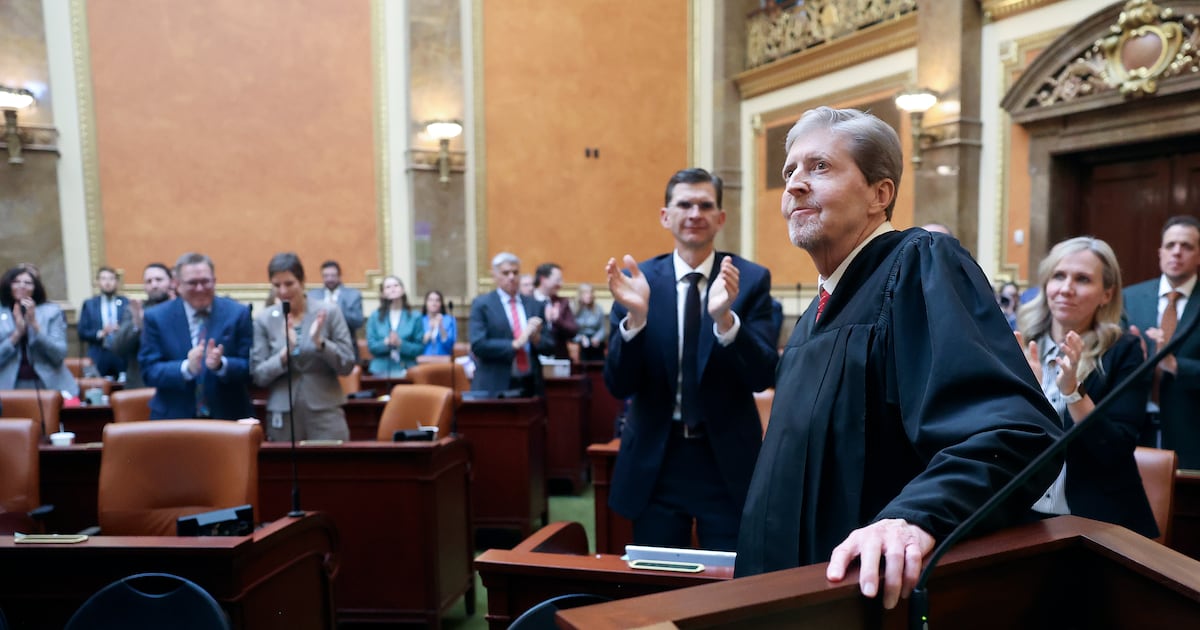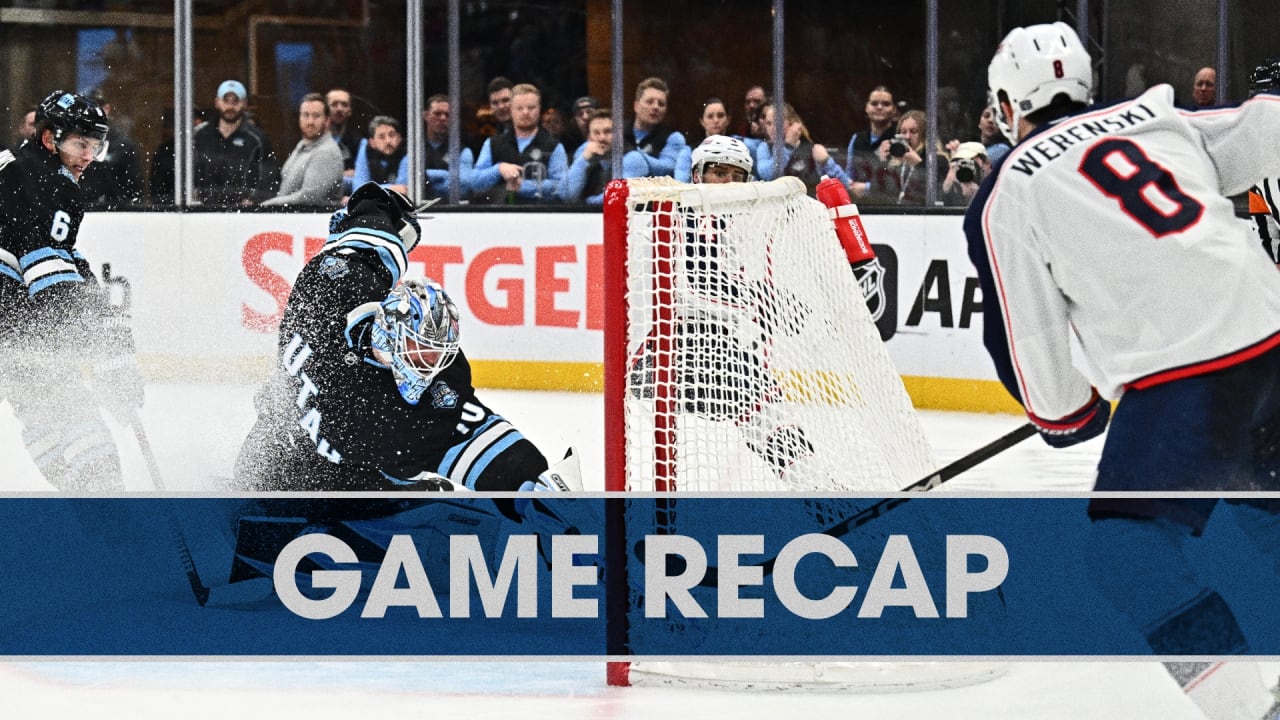While Utah has shown through the first half of league play it is well behind the upper echelon of the Big 12 programs, there’s still that optimism that the Utes could — in theory — earn a first-round …
Perhaps fittingly, in the last game of the first half of Big 12 Conference play, Utah coach Craig Smith faced off against another head coach getting his first taste of Big 12 action this season.
Steve Lutz and the Oklahoma State Cowboys got the better of Smith and the Runnin’ Utes on Saturday afternoon, beating Utah 81-72 at Gallagher-Iba Arena in Stillwater, Oklahoma.
This gave the two schools a split of a pair of games during the first half of the conference schedule. Going into the midway point, the Utes are 12-9 overall and 4-6 in Big 12 action, while the Cowboys, under first-year coach Lutz, are 11-10 and 3-7, respectively.
The Utes, admittedly, missed a solid chance to pull even in league play after an 0-3 start. They were a slight favorite on the road, a rarity in the conference, especially for teams like Utah, who was picked to finish last in the Big 12 this season.
That leaves disappointment in Utah’s program following Saturday’s outcome, though Smith, in his own way, was able to reflect on a loss while focusing on how a determined, focused approach could pay dividends.
“We were picked 16th out of 16. Now, being a part of it halfway through, we have a better feel for what you need to have to really climb to where you want to go,” Smith told reporters after Saturday’s game.
“I’m sure Steve has seen the same thing, and I’ve certainly seen it. We have some really good things, but there’s some things that we have to add if we’re going to do what we need to do as we move forward.”
Going into the second half of conference play, which begins with a game against last-place Colorado on Wednesday (7 p.m. MST, ESPN+), the Utes find themselves tied with three other schools (UCF, TCU and Kansas State) at 4-6 in the conference standings.
They all sit one game behind eighth-place West Virginia.
In the Big 12 basketball tournament in Kansas City, which runs March 11-15, the league’s bottom eight schools will be forced to play in the first round.
Teams seeded five through eight earn a bye to the second round, while teams one through four have a bye until the quarterfinals.
While Utah has shown through the first half of league play it is well behind the upper echelon of the Big 12 programs, there’s still that optimism that the Utes could — in theory — earn a first-round bye if they can grab that eighth spot in the league standings.
It’s a slim margin of hope at this point for a team two games under .500, but it also reflects the uncertainty that surrounds the Big 12 for every team that finds itself outside the upper crust of schools like Houston, Iowa State, Arizona and Texas Tech.
“I love it. I think it’s an awesome league,” said Smith, who led the Utes through their final three years in the Pac-12 Conference. “The brand of basketball, I love the physicality of it. I love the athleticism of it, the skill level of it.
“Lots of well-coached teams, that’s just the whole thing. Great venues, being on the road, venues that are really hard, and you feel the presence at certain places. It’s awesome.”
The reality is, Utah — a once-proud program that hasn’t played in the NCAA tournament since 2016 — is living through the hard times of learning how “to show up every day” in the Big 12, often considered one of the best two or three leagues in the college game.
That’s been reflected in the number of blowouts Utah sustained during the first half of league play. In that disastrous start, the Utes lost three straight by an average of 25.3 points per game.
Then came a three-game winning streak, which began with the aforementioned victory over Oklahoma State when it visited Salt Lake City.
The Utes followed that with a victory at TCU — thus far their only true road win of the season — and a home victory over rival BYU in overtime.
“I’m a big believer you can talk the talk all you want, but you got to go walk the walk, and actions speak louder than words,” Smith said.
When exactly progress may or may not pay off for Utah is difficult to tell, especially in the now 16-team Big 12, which plays a 20-game schedule in 10 weeks.
There are few times to catch a breather during the conference stretch, and the Utes are also headed into the tougher half of their conference schedule, according to national metrics.
Torvik rates Utah as having faced the 11th-toughest schedule in Big 12 play so far, and over the next half, the Utes will face the ninth-toughest.
That may not seem like a significant change, but KenPom helps paint the picture of what lies ahead for Utah. Of the Utes’ final 10 games, KenPom has Utah as the favorite in four of them.
Their most favorable odds for a win are a 78% probability of beating Colorado at home on Wednesday. After that, in two of the other three games Utah is favored, the Utes are a narrow favorite over Arizona State (53%) and West Virginia (52%).
In its five remaining road matchups, the highest probability for Utah to win is 27% at UCF, according to KenPom. By those numbers, it’s fair to assess that things could get tougher in the back half of the schedule — ergo, victories could be even more difficult to come by.
For Smith, he’s embracing the challenge of rolling up his sleeves and getting to work, a mentality he’s lived in his coaching career that’s included head-coaching stops at Maysville State, South Dakota and Utah State before landing at the U.
“It’s not for the meek. You better have a strong backbone, and you better have a strong spirit, and you gotta have the fine line of learning right through disappointment and learning through victory,” Smith said of the Big 12 grind.
Part of that learning process, Smith said, is figuring out how to handle both prosperity and failures.
“You’ve gotta be able to handle prosperity. I think that’s the thing that people don’t talk about enough. I saw this quote a long time ago — for every 100 men that can handle failure, only one can handle success, and I really believe that,” Smith said.
A couple weeks ago, things were looking good, as Utah was on a three-game winning streak and had established a presence as a team willing to be physical in the post and run its offense through the paint.
“When things are going good, it’s easy to forget why it’s going good, and (be like), ‘Oh, we got this, so you gotta be able to handle prosperity, but then you gotta also be able to handle failure. Sometimes when you get down, it’s either easy to feel the loser’s limp, it’s easy to feel sorry for yourself, and you gotta respond,” Smith said.
Since that three-game winning streak, Utah has lost three of its last four, with the setback to Oklahoma State the only conference game thus far that the Utes have lost by single digits.
That loss is arguably also the most discouraging — after all, the majority of Utah’s losses thus far have come against tough teams in No. 6 Houston, No. 3 Iowa State, Texas Tech (which just beat Houston in overtime) and two against perennial conference power Baylor.
The key, Smith reiterated, is that Utah can’t let losses and disappointments of the past impact potential future growth.
“With 20 games in 10 weeks, you learn and it’s on to the next and if you’re still worried about a tough loss or you’re still celebrating a big win, it’s probably not going to be very good for you the next game so you’ve got to be able to learn, but you’ve got to have amnesia,” he said.
That’s the reality of Big 12 play — one that Utah is halfway through in its inaugural season, and one in which Smith is unabashed in desiring to be better while also understanding the adversity his team will face in the next five weeks, plus the conference tournament.
“It’s a heck of a league. So pumped to be a part of it,” Smith said. “With the league, just like we’re learning, right?”
Superlatives from Utah’s first half of Big 12 play
Best win — 73-72 vs. BYU, Jan. 18. The Utes rallied from an eight-point second half deficit and used a physical presence inside to take the fight to the Cougars.
Ezra Ausar had 21 points, while guys like Hunter Erickson and Keanu Dawes made clutch plays at critical moments as Utah beat BYU for the second straight time.
This victory looks even better, considering BYU has won four straight since.
Worst loss — 70-36 at Houston, Jan. 22. While the Cougars are a headache for everyone they face and create issues across the board, it’s the way the situation unfolded that was discouraging.
Just four days after Utah had beaten BYU, the Utes went to Houston and were manhandled by a suffocating Cougars defense and rarely showed much fight. It resulted in the lowest-scoring game for Utah in more than a decade.
Best development — Ezra Ausar coming into his own. Ausar, the East Carolina transfer, had shown flashes of his potential to take over the paint during nonconference play.
In league action, he’s started to be even more assertive overall, though there’s still consistency needed from the closest thing the Utes have to a go-to player.
Ausar has averaged 15 points over the last five games, and that even accounts for a 1-point game against Houston.
Biggest issue – Turnovers. While Utah has defensive troubles keeping up in the Big 12, turnovers have been especially problematic.
The Utes are worst in the league in turnover margin at minus-6.2, well behind the second-worst team (Colorado) at minus-4.4. Utah is giving up 14.6 turnovers a game, and teams have consistently turned those takeaways into points.
What lies ahead — The Utes will play five home games and five road games over the next five weeks. That slate includes a road game at Arizona, two contests against previously ranked West Virginia, and the highlight — a home game against No. 11 Kansas on Feb. 15, as well as a road game at BYU to finish the regular season.
Source: Utah News














